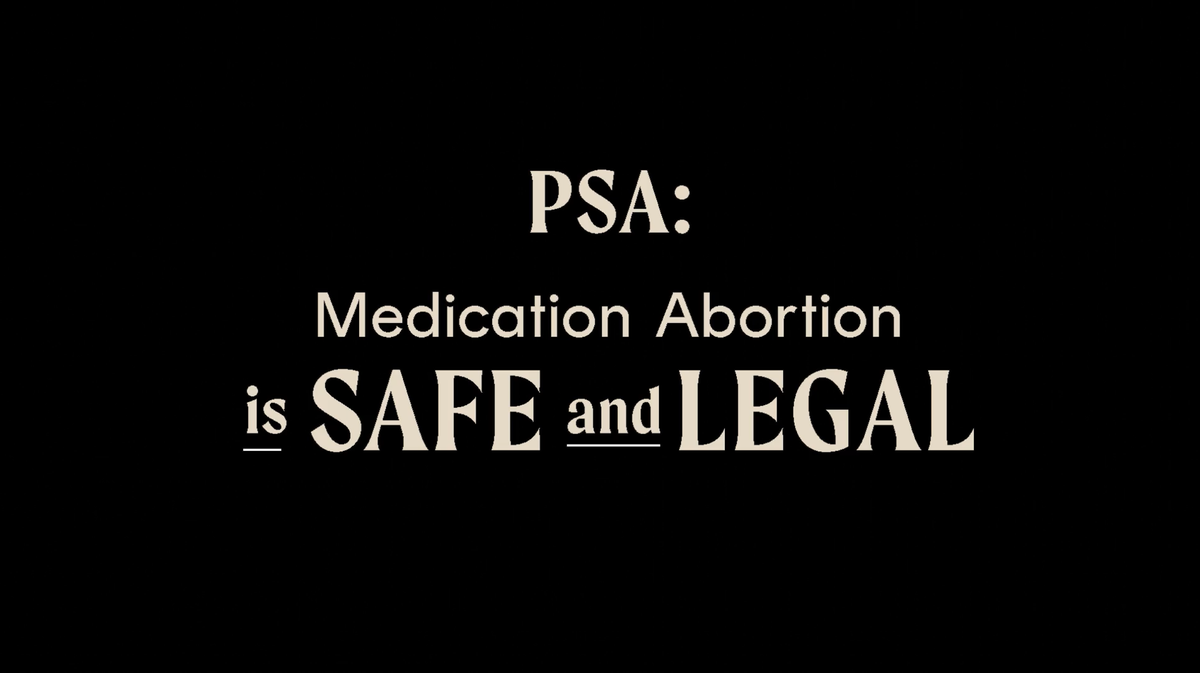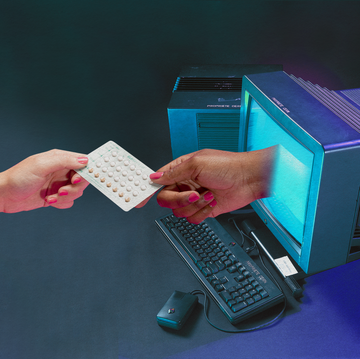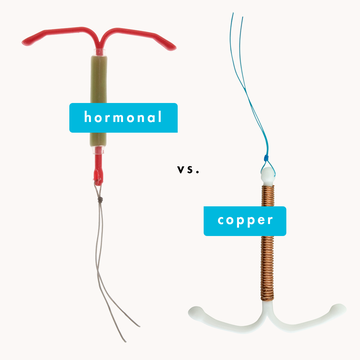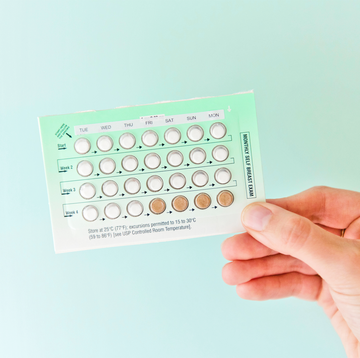This story has been reviewed by Rathika Nimalendran, MD, a family medicine practitioner and abortion provider based in North Carolina.
Update 4/10/23: The future of medication abortion is…TBD, as two federal judges issued conflicting rulings last week about access to one of two drugs that have been used around the world for decades to terminate pregnancies in the first trimester. In one ruling, a conservative Texas judge invalidated the FDA’s 23-year-old approval of mifepristone nationwide, but paused the ruling for a week so it can be appealed. In the second case, in which a group of Democratic-led states sued to expand access to abortion medication, a judge in Washington State ruled that mifepristone should remain available in 17 states and D.C. Because of this confusing legal morass, it’s likely that the anti-abortion Supreme Court will be called upon to resolve the difference. The bottom line: mifepristone is still available for the time being, and abortion providers have vowed to pivot to misoprostol-only abortions, which have been shown to be effective and safe.
You can stay up to date on the abortion pill federal rulings here:
With the political firestorm swirling around abortion pills lately, you’d think they were some brand-new invention. In fact, these medications have been available in the U.S. for 20-plus years—and are highly effective as an abortion method in the first 11 weeks of pregnancy. Abortion pills are noninvasive, require zero anesthesia, and are safe enough to take at home. More than half of abortions in the U.S.—54 percent—were carried out with medication in 2020.
Last December, the U.S. Food and Drug Administration permanently eased a restriction on abortion pills. Now, instead of making patients go to a doctor’s office or clinic to start the medication, doctors can prescribe abortion medication through telehealth consults and ship the pills right to patients’ homes. This change, originally brought on by social distancing measures during the pandemic, has allowed scores of people to safely self-manage their abortions in areas with few or zero providers.
Still, safety and legality are two different concepts, and the FDA’s approval of the method doesn’t mean that abortion pills are super accessible everywhere. Lawmakers in some states are working to restrict or ban abortion, with 19 states currently prohibiting the telehealth approach. In these areas, obtaining abortion pills can be more difficult and may expose patients and providers to legal risks.
Here’s what you need to know about medication abortion, including who can take abortion pills, the physical effects of medication abortion, legal considerations to keep in mind, and organizations that ship abortion pills by mail.
What is the abortion pill?
A key thing to know is that the “abortion pill” is actually a pair of medications—two kinds, typically taken a day or two apart, that work together to terminate a pregnancy. The first medicine is mifepristone, which causes the embryo to detach from the uterine wall by blocking the hormone progesterone. (This is the pill that the FDA previously required patients to take at their doctor’s office; in many cases, it’s still taken at a clinic.) The second medicine is misoprostol, a four-tablet dose that you take on your own within a day or two of the first pill. Misoprostol works by causing cramping that empties the uterus, kind of like a heavy period.
You swallow mifepristone with a swig of water, just like you would any other pill. The four misoprostol pills, on the other hand, are taken a little differently: You can either insert the pills into your vagina to dissolve or dissolve them in your mouth over about 30 minutes (by placing all four under your tongue or in your lower cheek sack).
If you’re 9 weeks pregnant or less, you may be able to take the misoprostol right after you take the mifepristone. If your pregnancy is farther along, you’ll need to wait 24 to 48 hours before you take the misoprostol. The abortion pill is FDA approved to terminate pregnancies up to 11 weeks. After that, you may need to consider an in-clinic procedure.
How effective is the abortion pill?
Medication abortion is effective for the vast majority of people who go this route, according to stats from Planned Parenthood. In rare cases—which tend to occur later in pregnancies—a second dose of misoprostol pills is needed for full termination. Your provider can discuss your needs in greater detail.
Here’s a closer look at the efficacy rates:
• Up to 8 weeks into a pregnancy: 98 percent effective
• 8 to 9 weeks: 96 percent effective
• 9 to 10 weeks: 93 percent effective with single misoprostol dose; 99 percent effective with second dose
Who can use the abortion pill?
Medication abortion is a safe and common procedure for terminating first-trimester pregnancies, up to 11 weeks after the first day of your last period.
From a physical standpoint, medication abortions are safe for pregnant people of all ages. Just note that some states require people under 18 to obtain parental consent or a judge’s permission (aka a judicial bypass; more info here on how to obtain one) before they can proceed with an abortion.
Medication abortion is also effective regardless of your weight (unlike Plan B, *sigh*). If you have an IUD, you may need to have it removed before you take abortion pills.
The main reason medication abortion might not be right for you is if you have (or are experiencing signs of) an ectopic pregnancy, a serious abnormality that occurs when a fertilized egg implants outside the uterus. Ectopic pregnancies require a different form of termination, usually from an in-person provider.
What happens when you take the abortion pill?
If you’re seeing a doctor in person, they’ll likely start by giving you a pregnancy test and an ultrasound to determine how far along the pregnancy is (in some states, the ultrasound is mandatory). But again, telehealth appointments with medication by mail are safe and effective too. In either case, you’ll be screened for signs of ectopic pregnancy and receive written instructions from your provider on how to take the pills.
The two kinds of medication used for an abortion each play a different role in the process. And so each produces different physical effects.
• Effects of mifepristone: After you take this first pill, there’s a good chance you won’t notice any changes at all. Some people feel a bit queasy or start bleeding at this point, but most are able to go about their day as normal.
• Effects of misoprostol: This is where you’ll want to plan for a day or two of downtime, either at home or in another comfy location. Because its job is to expel the uterine lining, misoprostol causes bleeding and noticeable cramping—usually beginning one to four hours after you take the four pills. Some people say this phase feels like a normal period, while others experience nausea, intense cramping, and heavy bleeding. If you fall into the latter camp, your doctor may be able to prescribe an anti-nausea medication to take with ibuprofen. (Do not take aspirin, which is a blood thinner that can cause more bleeding.)
It’s not abnormal to see some pretty big clumps of tissue or blood clots after taking misoprostol (Planned Parenthood says these can be up to the size of a lemon). On that note, be sure to opt for pads—not a tampon or a menstrual cup—to better allow blood and pregnancy tissue to exit your body.
Bleeding usually starts to subside four or five hours after it starts, with light bleeding and spotting often continuing for up to three weeks after a medication abortion. Cramping usually persists for a few days before gradually easing up.
If you saw a doctor in person, they’ll have you come back in for a follow-up, where you’ll get a blood test and possibly another ultrasound to make sure the abortion is complete and you’re healthy. If you consulted a doctor through a telehealth service, they’ll give you recommendations on when to take a home pregnancy test or see an in-person provider for a follow-up ultrasound.
Is the abortion pill safe?
Yes, medication abortion is safe. Serious side effects requiring hospitalization happen in fewer than 0.4 percent of cases, which means abortion pills have a better safety record than Tylenol, penicillin, and Viagra.
The most common side effects of the abortion pill are nausea, vomiting, diarrhea, dizziness, fatigue, and a mild fever of up to about 100 degrees.
That said, seek medical care immediately if you experience any of these rare but serious symptoms: a fever of 101 degrees or higher or uncomfortable vaginal discharge that gives off a bad smell. These are signs of a possible infection, which can occur when traces of pregnancy tissue are left behind. Your doctor may prescribe antibiotics or recommend a secondary removal method, such as a vacuum aspiration, to clear out the remaining pregnancy tissue.
While abortion pills are intended to cause bleeding, seek medical attention if you start to experience heavy blood loss—roughly defined as soaking through two or more thick maxi pads in two hours. Doctors can treat the blood loss with more misoprostol or with a vacuum aspiration.
Are abortion pills detectable in my body?
Abortion pills won’t show up on a blood screening or any other lab test. If you’re among the small number of people who experience problems with the medication—and you live in a state that’s hostile to abortion—it’s understandable that you may be concerned. Rest assured: There’s no medical reason to disclose that you took abortion pills, and it’s 100 percent fine to keep that info to yourself. (If you administered your misoprostol vaginally, just be sure to sweep out any remaining bits and pieces of the pills—which would be detectable—before your exam.) Medical abortions unfold just like spontaneous miscarriages and are treated in the exact same ways. When you arrive at the office or hospital, you can simply say that you think you might be experiencing a miscarriage.
Are abortion pills legal?
While abortion pills are safe, effective, and 100 percent FDA approved, some states have passed laws that make it difficult to access them. To find out your state’s rules on medication abortion, visit the Guttmacher Institute’s medication abortion page for state-by-state information.
A few key things to keep in mind:
• Gestational limits: Certain states ban the use of abortion pills before the 11-week mark set by the FDA. Examples include Indiana, where medication abortion is banned starting at 10 weeks, and Texas, where the ban starts at 7 weeks.
• Age restrictions: Although there are no safety-related age restrictions on abortion pills, several states restrict abortion care for people under the age of 18. If you’re a minor, you may need parental consent or a judicial bypass.
• Mandatory counseling and waiting periods: 27 states require that patients wait a certain amount of time—usually one to three days—between a required counseling session and the actual abortion. This might mean that you have to make multiple visits to a clinic. You can learn more about the mandatory waiting periods in your state here.
• Mandatory ultrasounds: 28 states currently require abortion providers to conduct an ultrasound—and 6 of those require doctors to show and describe the ultrasound image to patients. You can learn more about mandatory ultrasound requirements in your state here.
• In-clinic requirements: 19 states require you to be in the physical presence of the doctor who prescribed the medication when you take the mifepristone, even though the FDA says people can safely take it without being watched, just like other prescription meds.
Ordering abortion pills online has allowed some people to bypass such requirements and barriers, but you should be aware of the legal risks. The reproductive rights nonprofit If/When/How operates a ReproLegal Helpline at 844-868-2812 that can help answer your legal questions.
How much do abortion pills cost?
If you’re paying for abortion medication completely out of pocket—with no insurance coverage—you can generally expect to pay $400 to $800. If you have insurance, check your plan to see if abortion pills are covered. Note that 11 states ban all insurance providers from covering abortion care, while 17 other states ban abortion coverage for certain types of plans. (Next time open enrollment comes around, you might be able to buy a “rider” that covers abortion.) If you don’t have insurance and are concerned about billing, inquire with your provider about payment options when you first reach out. Clinics may be able to connect you with an abortion fund to help cover costs. Many clinics also accept credit cards.
Where can I get abortion pills?
Abortion pills in person
If you live in a state where abortion is available and you have a doctor you trust, your regular ob-gyn may be able to prescribe the pills. If you need to find a new in-person provider (whether in your home state or a state you’re traveling to), a good place to start is AbortionFinder.org or ProChoice.org. You can also find providers by calling the National Abortion Federation (the folks behind ProChoice.org) at 877-257-0012 or Planned Parenthood at 800-230-PLAN.
Abortion pills online
If ordering abortion pills to take at home feels like a better option, consider going to PlanCPills.org. They can match you with a telehealth provider that operates in your state, with some of the most common being AidAccess, Hey Jane, Just the Pill, Carafem, and Choix. Each of these websites will ask you to complete a form with some basic medical info, like the first day of your last period, which a doctor will review before prescribing you the medication and sharing instructions on how to take it. Then, depending on where you live, a pharmacy in the U.S. or abroad will mail you the pills. (They typically arrive in a few days but can take up to four weeks if they’re coming from another country.)
Doctors around the world have used telehealth for years to prescribe abortion pills to patients in states or countries where abortion is restricted. Doctors at the organization AidAccess, which is based in Austria, are still prescribing abortion pills to patients in U.S. states where there are bans on abortion or telehealth. But again, if you have questions about the legal risks of ordering abortion pills, contact the ReproLegal Helpline.
Can I order abortion pills *just in case*?
It’s possible—for now, anyway. Last year, in response to growing abortion restrictions in the U.S., AidAccess began offering “advance provision” of abortion pills. What this means is that if you think you might need an abortion someday or your state might make abortion more difficult to access, you can order abortion pills to keep on hand in your medicine cabinet. Currently, AidAccess is the only organization that offers this service. (Doctors in the U.S. aren’t allowed.) Abortion pills have about a two-year shelf life; an expiration date should be printed on the back of the package.
The process for ordering advance provision abortion pills is almost identical to ordering them if you needed an abortion right now. You’ll complete a similar form on the AidAccess website, only instead of entering the date of your last period, you’ll check a box letting the doctor know that you’d like the pills just in case. Depending on where you live, the pills will ship from either a pharmacy in the U.S. or a pharmacy in India. A doctor will still review your form and send you detailed instructions on how to take the pills, should the need ever arise.













